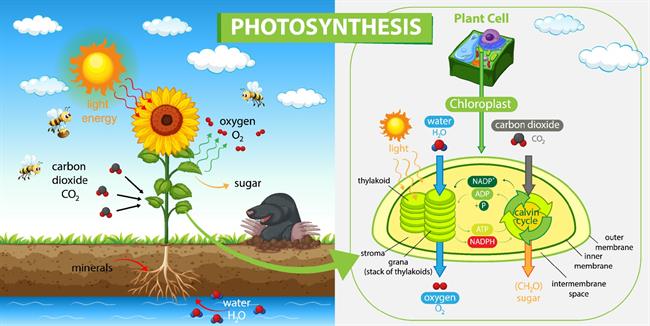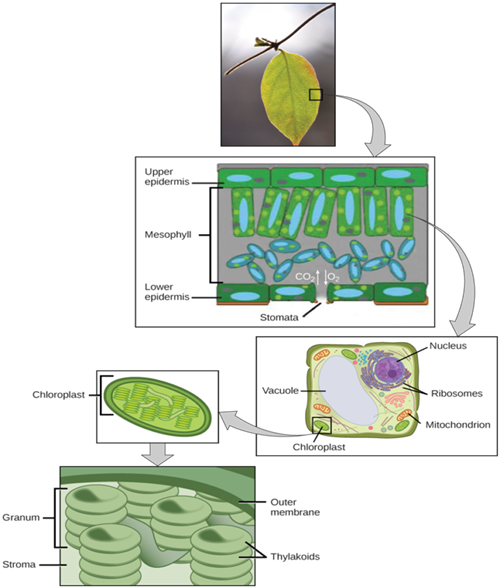
PUMPA - SMART LEARNING
எங்கள் ஆசிரியர்களுடன் 1-ஆன்-1 ஆலோசனை நேரத்தைப் பெறுங்கள். டாப்பர் ஆவதற்கு நாங்கள் பயிற்சி அளிப்போம்
Book Free DemoPhotosynthesis:
The process through which plants prepare their food is called photosynthesis.
In the term photosynthesis, the term 'photo' means light, and 'synthesis' means to build. Hence, photosynthesis means 'building up with the help of light'. During the process of photosynthesis, light energy is converted into chemical energy.
Organisms such as green plants, algae and chlorophyll-containing bacteria prepare their food through photosynthesis, and they are said to be in an autotrophic mode of nutrition.

The overall process of photosynthesis
It is an anabolic process in which carbon dioxide combines with water are converted into organic compounds inside chlorophyll-containing cells utilising sunlight as a source of energy. During this process oxygen is released as a byproduct.
The overall equation of photosynthesis is as given below:
Carbon Water Glucose Water Oxygen
dioxide
dioxide
Where does photosynthesis occur?
All green portions of the plant, notably green leaves, participate in photosynthesis. This is because the pigment chlorophyll is present here.

Chloroplast and chlorophyll
Photosynthetic pigments:
Recall the various requirements of photosynthesis which we have discussed in Grade IX.
We know that chlorophyll is the pigment involved in photosynthesis. Hence it is known as photosynthetic pigment. There are \(5\ \)types chlorophyll pigment found in plants. They are
- Chlorophyll a
- Chlorophyll b
- Chlorophyll c
- Chlorophyll d and
- Chlorophyll e
Out of these pigments only two pigments: chlorophyll a and chlorophyll b are found in higher plants.
The photosynthetic pigments categorized into two classes.
- Primary pigments (Chlorophyll a)
- Accessory pigments
1. Primary pigment:
Chlorophyll a (Chl.a) traps the solar energy and converts it into electrical and chemical energy. Hence they are known as reaction centers. As chlorophyll a performs the reaction of photosynthesis it is known as the primary photosynthetic pigment.
2. Accessory pigments:
The other pigments such as chlorophyll b and carotenoidstransfer the absorbed solar energy to chlorophyll a (Chl.a) molecule. Hence, they are known as accessory pigments and harvesting centers.
Important!
The reaction centers and the harvesting centers together form the pigment systems.
Reference:
https://cnx.org/contents/s8Hh0oOc@8.56:cInR-Trg@7/Overview-of-Photosynthesis